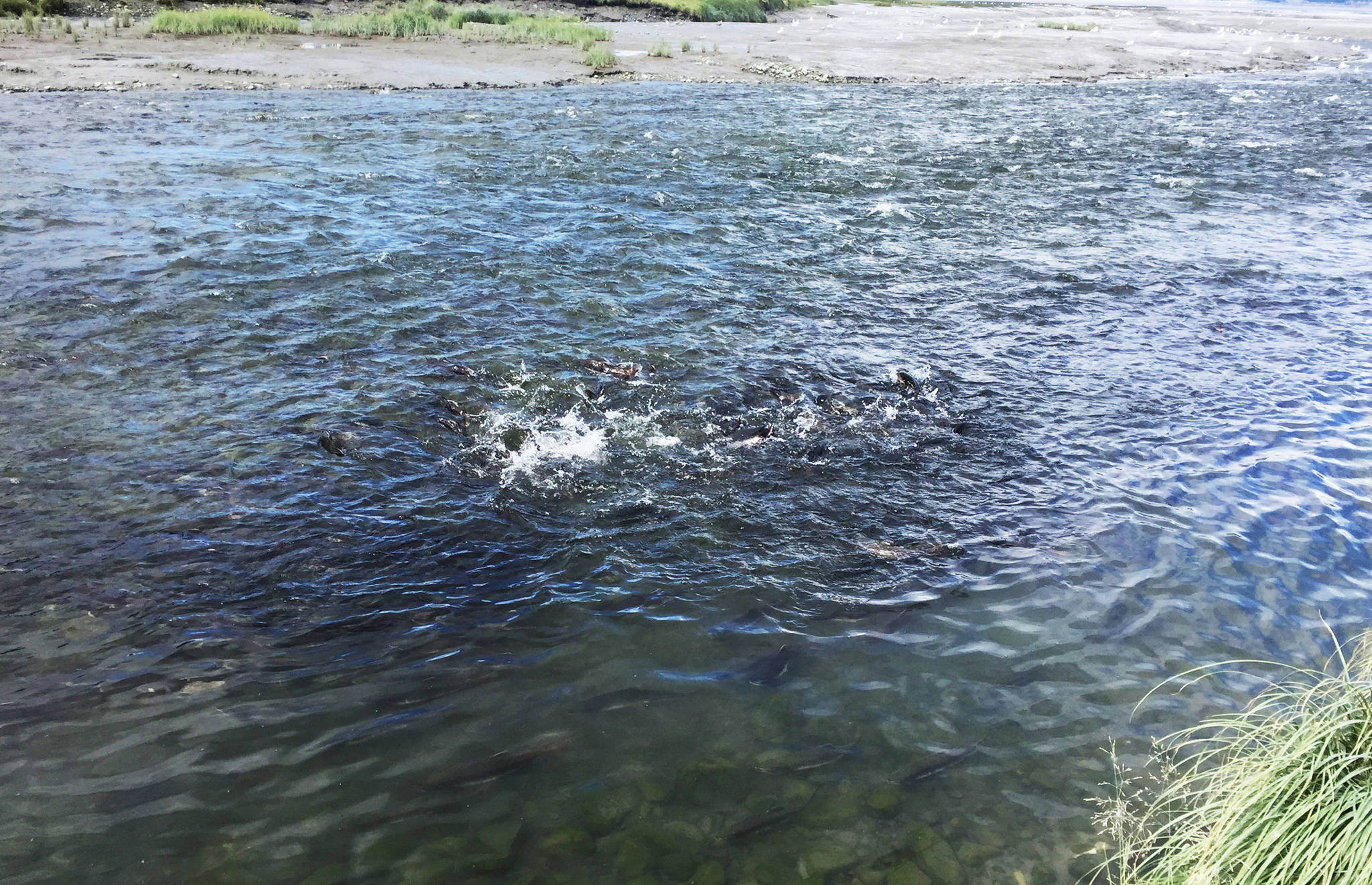Beyond just the cost and politics of Ballot Measure 1, state administrators have expressed concern about who would be in charge of what land.
Ballot measure 1, a statewide ballot proposition commonly known as the “Stand for Salmon” initiative, would rewrite much of the existing statute relating to permits for activities in fish habitat. One of its main thrusts is to classify types of permits into “major” and “minor,” with major permits required for projects judged to have a significant impact on stream habitat.
Proponents have said the initiative would give the Alaska Department of Fish and Game’s Habitat Division more discretion over whether to grant a permit; opponents have said it would block a number of major resource development projects and infrastructure projects in the state. At a special hearing July 20 of the Senate State Affairs committee, commissioners and staff from four state departments offered analysis on how the initiative would impact their operations.
“A simple activity, let’s say a culvert, it’s not just a single permit,” explained Kyle Moselle, the associate director of the Alaska Department of Natural Resources office of project management and permitting in Anchorage. “It’s a fish habitat permit, it’s a temporary water authorization permit … it’s multiple permits. When you start to scale that up to a bigger project, like a dam project … you start to have overlapping jurisdictions. The initiative only modifies the authority of Fish and Game.”
The Department of Natural Resources regulates activities the state tidal lands, from the mean high tide up to three nautical miles offshore. That includes activities from mooring fishing buoys to mining to water use rights. If the initiative passes, that could change the authority the department has over the lands, Moselle said, raising a question of whether DNR can issue a permit for an activity it considers the best use of the water if Fish and Game doesn’t.
Another item included in the initiative is for public comment to be required for fish habitat permits. Many of the stages in the permitting process already require public comment, including for water rights, rights-of-way and easements, Moselle said.
Like DNR, the Alaska Department of Environmental Conservation would also have jurisdiction questions for granting permits if the initiative passes. Andrew Sayers-Fay, the director of the Division of Water Quality for DEC, gave the example of mixing zones for sewage treatment facilities. If the initiative passes, DEC could permit mixing zones under its regulations, but Fish and Game could deny the permits based on its fish habitat regulations.
For an agency like the Alaska Department of Transportation and Public Facilities, which regularly works in streams to improve roads, replace culverts, maintain airports and repair bridges, among other activities, the changes in the initiative may significantly delay projects in part because of the permitting processes.
Most of DOT’s projects are federally funded and thus have to meet the requirements of the National Environmental Protection Act. But because of the types of projects they do, most of them fit into the “categorical exclusion” category, allowing the agency to bypass the much longer Environmental Assessment or Environmental Impact Statement process.
“Over the last few years our state-funded projects have become less of our typical work load to the extent that virtually all our projects rely on federal funding of some sort,” said Ben White, the statewide environmental analyst for DOT, in an email. “Of all our projects, over 90 percent are processed as a categorical exclusion.”
One of the clauses in the Stand for Salmon initiative is that projects expected to have “significant adverse effect” on salmon habitat requires a major permit. DOT and its contractors regularly redirect streams, place riprap along streambanks and temporarily block fish passage. The initiative’s language will scale the categorical exclusion-level projects up to an environmental assessment, which White estimated in the hearing could take up to three years to complete.
“The roads, the bridges, everything we build are designed to maintain safety for the traveling public,” he said. “There’s some concern that this may trump some of those safety concerns. We may not be able to use riprap to protect revetments or abutments.”
DOT is the single biggest source of habitat permit applications, said Ron Benkert, the director of Fish and Game’s Division of Habitat. Under the new regulations if the initiative passes, the Division of Habitat’s jurisdiction would expand into the riparian areas around rivers as well, because they would be presumed to be fish habitat. That would require Fish and Game to work out jurisdiction issues with other land management agencies, Benkert told the committee.
The Division of Habitat does have some discretion over who has to have a permit — for instance, the minimal damage caused by an angler standing in a stream, Benkert said. The state has also taken new science into consideration over the years for best practices to protect streams, such as updating the standards for blasting, he said.
“Although (the law) hasn’t changed since 1962, it’s not like we’re permitting in the same way we were in 1962,” he said. “We take a lot of different things into consideration as the knowledge in the field continues to develop.”
The state challenge the legality of the initiative in the Alaska court system and is currently waiting on a ruling from the Alaska Supreme Court on whether the initiative is legal to be on the ballot on Nov. 6. A decision is expected by September.
Reach Elizabeth Earl at eearl@peninsulaclarion.com.

